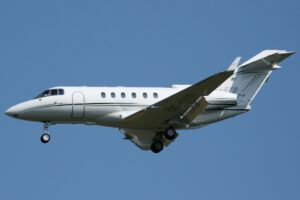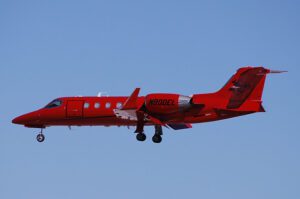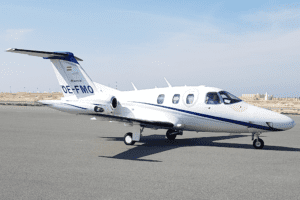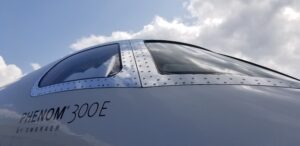
Hello my aviation friends and colleagues. This week we look at why our clients are saying Go Bigger or Don’t Go At All. The need for larger aircraft, and more importantly longer range, has kicked up the demand in the Midsized Jet category. We will first take a look at a popular all-time favorite of the air charter crowd, the Cessna Citation Excel. Then the much larger, and growing in popularity, Bombardier Challenger 350. Finishing off the group with my personal favorite, the Hawker 900XP. These are all big and roomy midsized jets just like the Hawker 800XP pictured above, but speed and range really set them apart. We start with a look at the tried and true Cessna Citation Excel. This is the first aircraft that really distinguish this category from its smaller siblings in the light jet category. Often when we quote a price on a requested heavy jet, typically a Gulfstream G4 or larger, new clients react with sticker shock. They quickly retract the original request and replace it with one for something a bit cheaper. The midsized category quickly becomes appealing especially when one of our operators has a midsize with light jet pricing. At that point a match is made and we proceed to secure the flight and mission requirements. It’s necessary to make sure range and room for passengers does not change too dramatically when we drop a category like this. Familiarity with the proposed midsized jet and operator can make the transition smooth and the dollar savings will be significant.
The Cessna Citation Excel – Go Big

The Citation Excel is a very suitable Go Big solution, or in some cases a “little less expensive please” substitute. This is the smaller of the midsized jet category offerings but has some very nice features. Born from customer consultations, the Excel is a shortened version of the Citation X Fuselage combined with a modified upswept supercritical wing based on the Citation V Ultra. Powered by twin Pratt and Whitney Canada PW-545A series turbofans. The cockpit has a standard Honeywell Primus 1000, three 8″ x 7″ screens EFIS avionics package consisting of two primary flight displays, one for each pilot, and a multifunction display. The cabin features standup headroom and a dropped aisle that runs the length of the main cabin. There is plenty of elbow room making it much more roomier than those of its light jet siblings. The max cruising speed is 429 knots with a max ceiling of 45,000 ft. The range at economical cruise is about 2,080 nautical miles. The maximum takeoff weight is just at 20,000 lbs. The normal layout is two crew seats and 8 passenger seats but some have 10 passenger seats in the main cabin. The typical hourly charter rate is around $3,600* USD for this jet.
The Bombardier Challenger 350 – Go Bigger

The Bombardier Challenger 350 is a Go Bigger upgrade. This is a true midsized jet that grows daily in popularity. The 350 aircraft’s wings, engines, and landing gears were all developed to ensure a perfectly balanced design, providing smooth take-offs, flights, and landings. Powered by a pair of Honeywell HTF7350 turbofans this Challenger have a cruising speed of 547 knots and a max take-off weight double that of the Cessna at 40,600 lbs. It has a lengthy total range of 3,682 nautical miles with braking improvements and rudder control modifications squeezing out the additional 1,500 nm of range over the Cessna. The cockpit has significant avionics including the combined Collins Aerospace head-up display and enhanced vision system. It boast one of the largest cabins in this category and enhanced soundproofing maximizes trip enjoyment with its oh-so-quiet cabin. You can enjoy high speed Ka-band and 4G ATG (air to ground) internet to do some work or stream your favorite movies. The seat finishes are world-class with flexible seating up to 10 passengers or less seats in a more Executive Club configuration. There is a large full function galley to enjoy meals on your nicely concealed tables at each executive arrangement. There is 106 cubic feet of unrestricted baggage access and storage, plus a lavatory featuring large backlit mirror, vanity, sink, and faucet. The average charter hourly rate for a Challenger 350 is near $5,500* USD.
The Beechcraft Hawker 900XP – Go Best

The Hawker series are one of my favorite aircrafts to charter. Actually a 900XP was one of the first private jets I arranged a charter on. We don’t mention who our clients are, but I can say he was an avid golfer and very impressed on his first trip in the Hawker. The key factor was the storage room for all his golf clubs and luggage and the 900XP fit his needs perfectly. The Hawker 900XP is a direct development of the Hawker 850XP. It improved on many of the 850s best traits like fuel efficiency, aerodynamics, and the overall performance capabilities. It has updated winglets improving the performance, range, and takeoff distances. Powered by twin Honeywell TFE731-50R engines this aircraft has a range of 2,733 nautical miles with fuel under NBAA IFR. It has the same Collins Pro Line avionics suite found in the the 850 including the all important terrain awareness warning systems, weather, reduced vertical separation minimum , and enhanced ground proximity warning system. The cabin is very roomy with LCD lighting, standup headroom, touch-screen seat controls, and plenty of in-cabin storage. The 950XP cruises at 452 knots with a max ceiling of 41,000 ft. The overall maximum takeoff weight is 28,000 lbs. The cabin height is a tall 5’9″ and width of 6 ft. Internal baggage is 50 cu ft with room for up to roughly 7 bags. The seating is typically 2 crew plus 8 passengers. It can be chartered for an hourly rate of $5,000* USD.
Up to this point we looked at three suitable private jet charter entries each in the Very Light, Light, and Mid-Sized Jet Categories. Some can be called old dinosaurs, and some we mention but would avoid chartering based on our data. Its a complex task to pick the right jet, but its more important to make sure it’s a safe jet. Next week we will look at the Heavy Hitters in the Heavy Jet Category.
Until Then, Be Social, Fly Private! Sign Up Today! Follow us on Facebook Follow us on Instagram




 Size matters when its a private jet charter. Luckily there are a lot of jet sizes to choose from when it comes to selecting your charter. They start in the category of very light jet all the way to a Boeing Business Jet that is the size of a commercial airliner. Today we will take a look at the entry level of the 4 categories in the air charter world, the very light jets. Since there are many in this category, we will discuss 3 of the hotter very light jets. It really comes down to what the mission is and how many people will be aboard. It also can have a lot to do with who will be flying. Sometimes the CEO will need his or her own space away from the travel group, and then only certain jets will do. Or the trip is for a large group and the seating capacity will be the main priority. Cargo space may be a deciding factor for a golfing weekend or a fashionista with an entourage of luggage. There are also various cruise speeds and the range flown without a fuel stop to consider. All in all, the process of choosing the right jet for a charter can be simple or at times very complex, especially on a multi-leg tour. Let’s look at the Very Lights this week.
Size matters when its a private jet charter. Luckily there are a lot of jet sizes to choose from when it comes to selecting your charter. They start in the category of very light jet all the way to a Boeing Business Jet that is the size of a commercial airliner. Today we will take a look at the entry level of the 4 categories in the air charter world, the very light jets. Since there are many in this category, we will discuss 3 of the hotter very light jets. It really comes down to what the mission is and how many people will be aboard. It also can have a lot to do with who will be flying. Sometimes the CEO will need his or her own space away from the travel group, and then only certain jets will do. Or the trip is for a large group and the seating capacity will be the main priority. Cargo space may be a deciding factor for a golfing weekend or a fashionista with an entourage of luggage. There are also various cruise speeds and the range flown without a fuel stop to consider. All in all, the process of choosing the right jet for a charter can be simple or at times very complex, especially on a multi-leg tour. Let’s look at the Very Lights this week.


 The 50 hour guideline for flying private.
The 50 hour guideline for flying private. Private air charter has many challenges ahead. Pictured above is one of our Managing Partners, Katherine Koch, my darling wife and future commercial ATP pilot. Unfortunately she only represents a small number of future commercial pilots headed towards the private air charter industry or a major commercial airlines. The pilot shortage is private aviation’s number one challenge, further exacerbated by competition for pilots from airline and freight operations. The airlines are offering huge sign-on bonuses, great work schedules, amazing benefits packages, and lofty annual salaries particularly for anyone experienced enough to graduate to the left seat of these jets. After forcing early retirements during the pandemic, the majors are desperately playing catch-up in this highly competitive industry. Upward mobility was already accelerated before the pandemic but now in the aftermath pilots are upgrading at minimums and jumping from regional to major airlines with unprecedented speed. There is a huge presence in aviation schools by most of the regional airlines that feed these major carriers, something we are not seeing enough of by the private air charter industry. It is a major challenge among many others we will discuss further in this article. In this article, we will take a quick look back 5 years ago at the challenges to private air charter that have shaped the current industry. In next week’s post, we will take a deeper dive into the current private air charter industry.
Private air charter has many challenges ahead. Pictured above is one of our Managing Partners, Katherine Koch, my darling wife and future commercial ATP pilot. Unfortunately she only represents a small number of future commercial pilots headed towards the private air charter industry or a major commercial airlines. The pilot shortage is private aviation’s number one challenge, further exacerbated by competition for pilots from airline and freight operations. The airlines are offering huge sign-on bonuses, great work schedules, amazing benefits packages, and lofty annual salaries particularly for anyone experienced enough to graduate to the left seat of these jets. After forcing early retirements during the pandemic, the majors are desperately playing catch-up in this highly competitive industry. Upward mobility was already accelerated before the pandemic but now in the aftermath pilots are upgrading at minimums and jumping from regional to major airlines with unprecedented speed. There is a huge presence in aviation schools by most of the regional airlines that feed these major carriers, something we are not seeing enough of by the private air charter industry. It is a major challenge among many others we will discuss further in this article. In this article, we will take a quick look back 5 years ago at the challenges to private air charter that have shaped the current industry. In next week’s post, we will take a deeper dive into the current private air charter industry.
 I think I should buy my own jet is a statement I hear often from many of our newly referred clients. Owning your own private jet or even a prop plane is a big endeavor for any person or business. Let’s look at the beginning for people interested in actually owning and flying their own plane or jet.
I think I should buy my own jet is a statement I hear often from many of our newly referred clients. Owning your own private jet or even a prop plane is a big endeavor for any person or business. Let’s look at the beginning for people interested in actually owning and flying their own plane or jet.